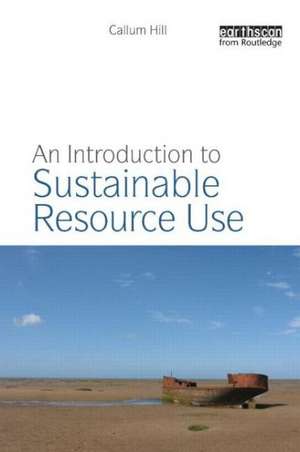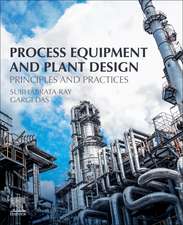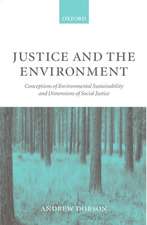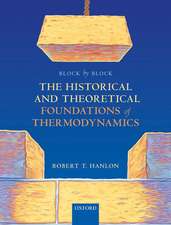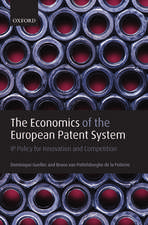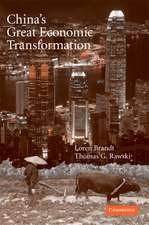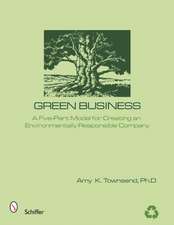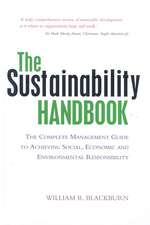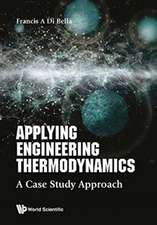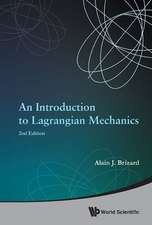An Introduction to Sustainable Resource Use
Autor Callum Hillen Limba Engleză Paperback – 27 ian 2011
After exploring the physical limits the laws of thermodynamics impose on resource exploitation, the book outlines options for managing resources within these limits. It then moves on to look at the resources themselves (from fossil fuels, through minerals to renewable resources such as timber) and the salient question of how the relentless increase in consumption is putting untenable strain on resource use. Case studies investigate what is being done across a range of sectors – and what is and isn't working. The second half of the book turns to solutions, from the promise of industrial ecology to a new economy based on renewable resources such as biobased materials from agricultural crops and forests.
Suitable for under- and postgraduate courses on environmental limits and resource use, and continuing professional development – particularly resource management, materials, industrial ecology, energy, resource economics and engineering.
| Toate formatele și edițiile | Preț | Express |
|---|---|---|
| Paperback (1) | 413.37 lei 6-8 săpt. | |
| Taylor & Francis – 27 ian 2011 | 413.37 lei 6-8 săpt. | |
| Hardback (1) | 1332.11 lei 6-8 săpt. | |
| Taylor & Francis – 27 ian 2011 | 1332.11 lei 6-8 săpt. |
Preț: 413.37 lei
Nou
Puncte Express: 620
Preț estimativ în valută:
79.11€ • 82.09$ • 66.12£
79.11€ • 82.09$ • 66.12£
Carte tipărită la comandă
Livrare economică 15-29 martie
Preluare comenzi: 021 569.72.76
Specificații
ISBN-13: 9781844079278
ISBN-10: 1844079279
Pagini: 256
Ilustrații: Diagrams, graphs, index
Dimensiuni: 156 x 234 x 20 mm
Greutate: 0.39 kg
Ediția:New.
Editura: Taylor & Francis
Colecția Routledge
Locul publicării:Oxford, United Kingdom
ISBN-10: 1844079279
Pagini: 256
Ilustrații: Diagrams, graphs, index
Dimensiuni: 156 x 234 x 20 mm
Greutate: 0.39 kg
Ediția:New.
Editura: Taylor & Francis
Colecția Routledge
Locul publicării:Oxford, United Kingdom
Cuprins
1. Background (Crisis? What Crisis?) 2. Thermodynamics (The Science of Energy and Change) 3. Resources (How Much is Left?) 4. Consumption (If We All Get Richer is this Good for the Planet?) 5. Impacts (The Consequences of Resource Use) 6. Ecologic (Integrating Industry with Nature) 7. Feedstocks (How Can Plants Supply our Technical Needs?) 8. Forestry (Criminal or Saviour?) 9. Conclusions (The End or the Beginning?)
Notă biografică
Callum Hill is the Edinburgh Research Partnership funded Chair of Materials Science in the Forest Products Research Institute at Edinburgh Napier University. He has been conducting research into renewable and sustainable materials for over fifteen years and has published extensively in this area.
Recenzii
"A remarkably readable text providing a comprehensive discussion of resource supply and demand and impacts. The reader travels from the industrial revolution and on the way takes in thermodynamics, important metals and mitigation strategies. He ends at the possibility that global food, energy and material requirements might well be met through harvesting of biomass which can be considered to be truly sustainable. Highly recommended." – Paul Fowler Executive Director, Wisconsin Institute for Sustainable Technology University of Wisconsin.
"The world faces major challenges to ensure that we use our precious resources in ways that protect the future requirements of humankind and our wider ecosystems. These challenges arise from the high forward growth of the world population and rapidly increasing consumption of resources by industrialised and newly industrialised nations. Dr Hill has written an excellent book that sets a definitive context and basis for all those of us concerned with the future sustainability of our resources. The book is very well researched and presents economic and societal perspectives alongside the science required to model and understand the factors underpinning sustainable resource use. The book covers a number of key themes including thermodynamics, resources, impacts and ecologics and considers the impact and role of naturally derived materials in fulfilling future resource needs. The book is a good read, the narrative written in a style that is easy to read and digest. Overall, the book is thought provoking, informative, very well researched and presented, and provides an excellent disposition on sustainable resource use. I highly recommend it." – Dr Peter Bonfield Chief Executive, BRE.
"The world faces major challenges to ensure that we use our precious resources in ways that protect the future requirements of humankind and our wider ecosystems. These challenges arise from the high forward growth of the world population and rapidly increasing consumption of resources by industrialised and newly industrialised nations. Dr Hill has written an excellent book that sets a definitive context and basis for all those of us concerned with the future sustainability of our resources. The book is very well researched and presents economic and societal perspectives alongside the science required to model and understand the factors underpinning sustainable resource use. The book covers a number of key themes including thermodynamics, resources, impacts and ecologics and considers the impact and role of naturally derived materials in fulfilling future resource needs. The book is a good read, the narrative written in a style that is easy to read and digest. Overall, the book is thought provoking, informative, very well researched and presented, and provides an excellent disposition on sustainable resource use. I highly recommend it." – Dr Peter Bonfield Chief Executive, BRE.
Descriere
This book explores the challenges our society faces in making the transition to renewable resource use in a way that is truly sustainable – environmentally, economically and socially.
